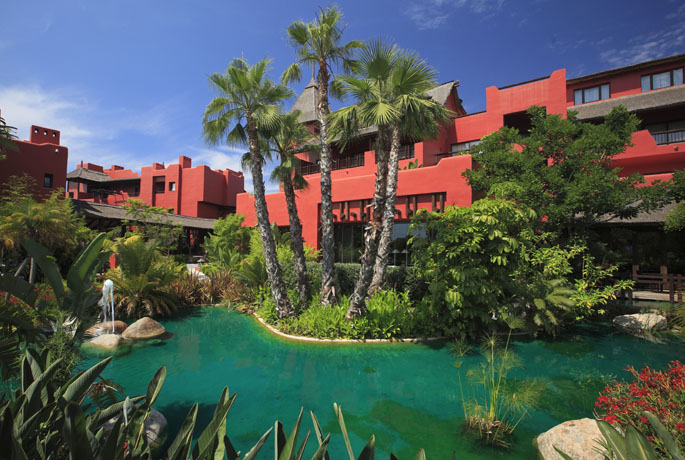Yuki-tsumugi
Today at the luxury hotel in Alicante Asia Gardens Hotel & Thai Spa we keep discovering the wonders the Asian continent has to offer us. We are travelling to Japan to find out more about the Yuki-tsumugi technique.
Yuki-tsumugi is a famous Japanese silk fabric production technique. It dates back to 2,000 years ago. In 2010 it was inscribed on the UNESCO Representative List of the Intangible Cultural Heritage of Humanity.
It is practiced mainly in vicinity of Yuki and Oyama, in the north of Tokyo. This region has warm temperatures and fertile lands, which are ideal for the growth of mulberry trees and sericulture.
Yuki-tsumugi technique is used to produce pongee silk, which is also called raw silk. This is a warm and light fabric with a very characteristic flexibility and softness. It is traditionally used to make kimonos.
Its production includes different stages: silk floss is spun into yarn by hand, with patterns added by hand-tying bundles of yarn before dyeing the yarn, then the silk is woven using a back-tension loom. Specifically, 40 different procedures are needed in order to produce the Yuki-tsumugi, each one of them developed by a highly qualified craftsman.
Traditional techniques of Yuki-tsumugi are transmitted by members of the Association for the Preservation of Honba Yuki-tsumugi Weaving Technique. This association is in charge of maintaining traditions of spinning, dyeing and weaving. Additionally, it promotes transmission of Yuki-tsumugi through training of young weavers, exchange of skills and practical demonstrations.
If you are an Asian culture lover and anything related to it, you have a mandatory stop at the luxury resort Asia Gardens Hotel & Thai Spa. Start planning your getaway to our Asian oasis of relaxation with privileged views of Costa Blanca.



